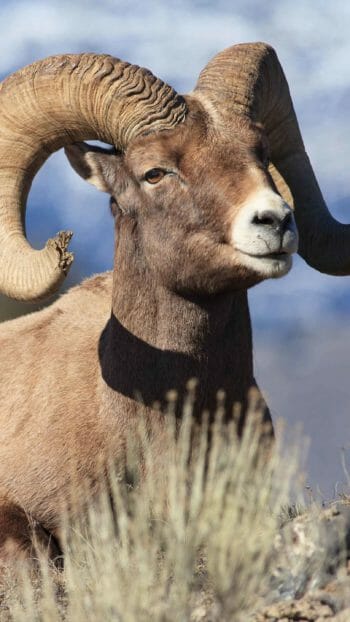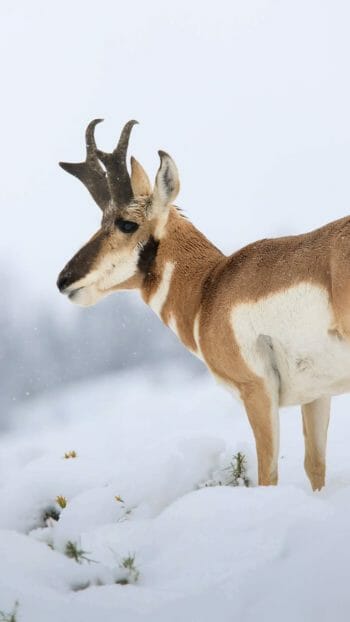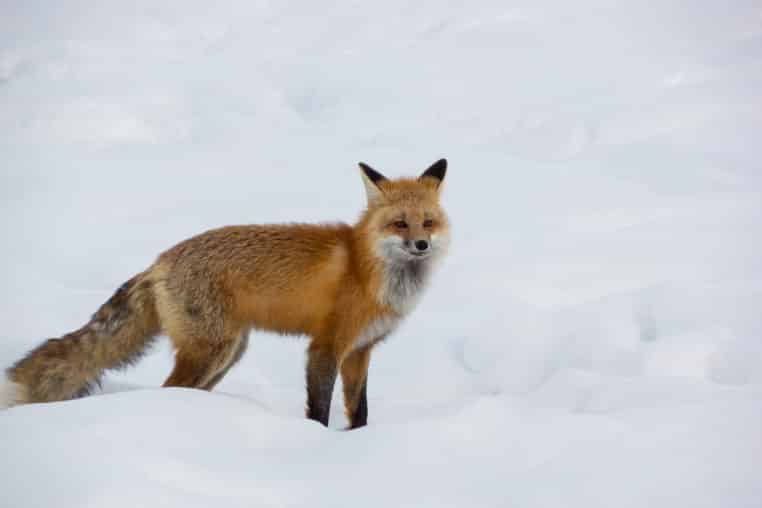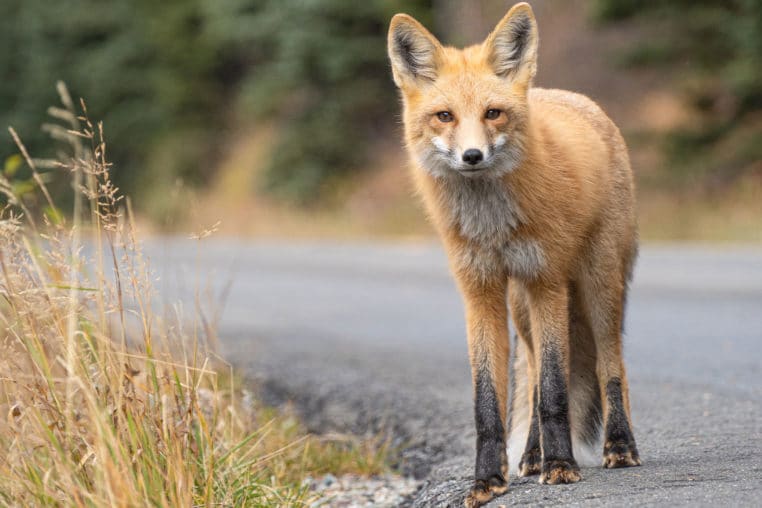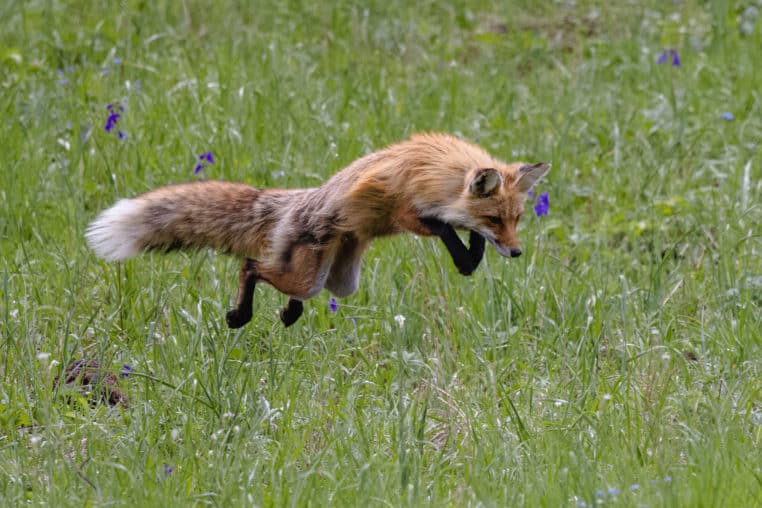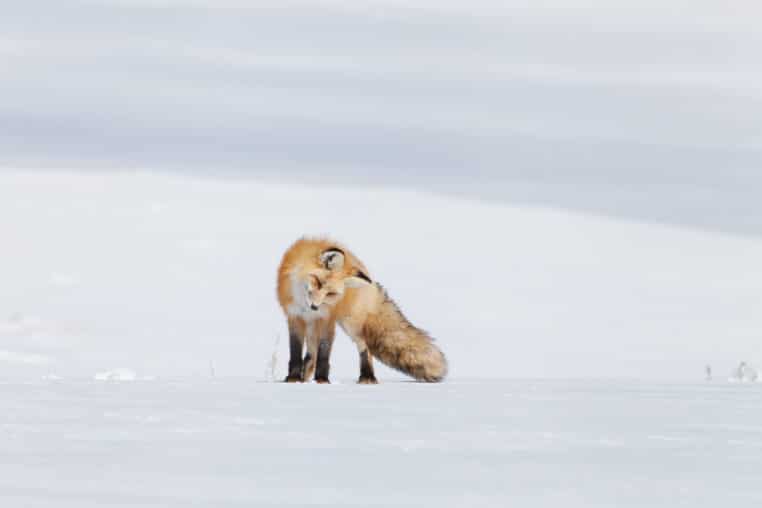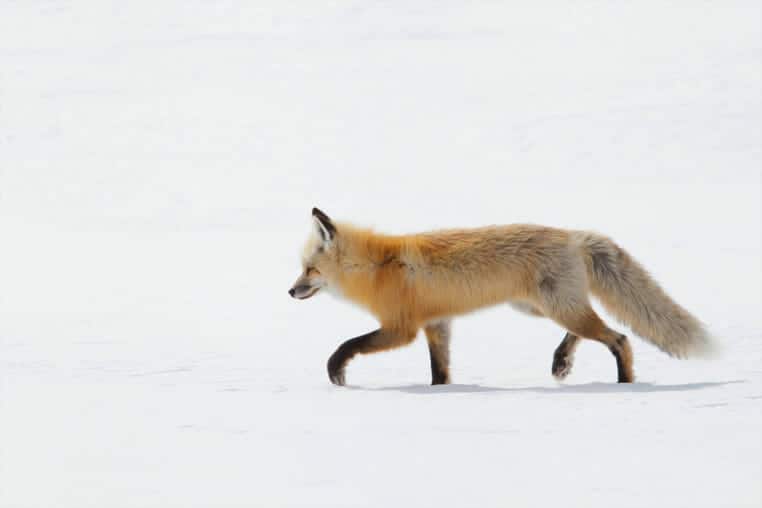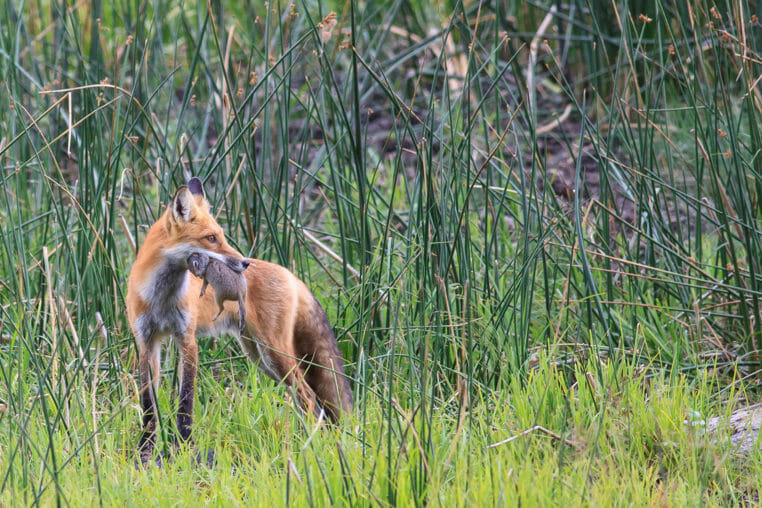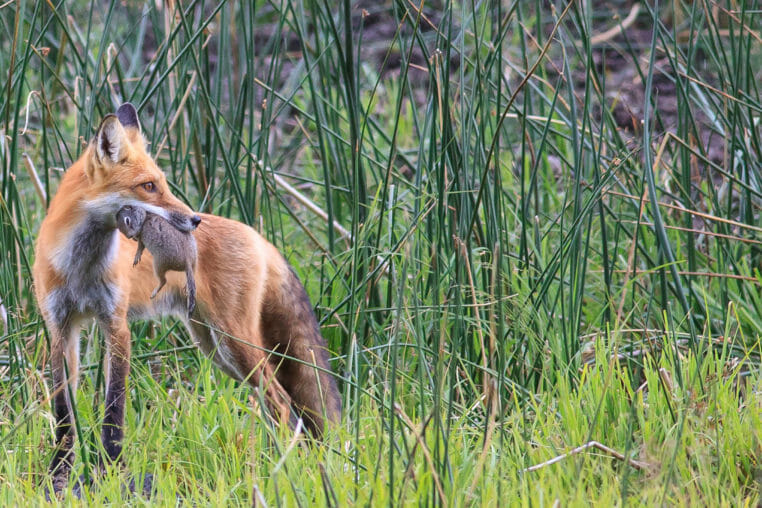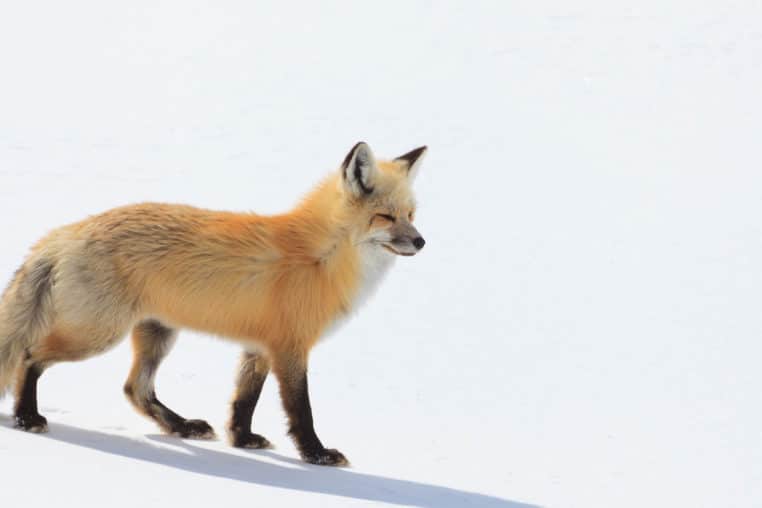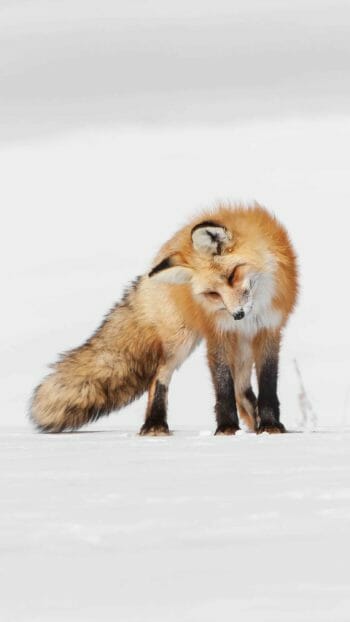
Vulpes vulpes
The red fox is one of the most charming and adaptable animals in the Greater Yellowstone Ecosystem. Known for their intelligence, beauty, and resourcefulness, foxes often capture the curiosity of visitors lucky enough to spot them. Though they are the smallest of Yellowstone’s wild canids, they are by no means less fascinating. Their agility, hunting skill, and striking coats make them a favorite among wildlife watchers and photographers. Despite their abundance across North America, many visitors to Yellowstone and Grand Teton find their first sighting of a red fox to be a magical experience, especially when witnessed against the snowy backdrop of winter.
Wildlife Viewing
- Yellowstone
Book Online
Watch For Wildlife On These Tours
About
Size and Color Variations
Red foxes are relatively small, weighing about 10–12 pounds, with males slightly larger than females. They are easily recognized by their long, bushy tail tipped in white, though their coat colors can vary widely. While the classic red coat is the most common, some individuals appear in shades of pale blond, gray, or even nearly black. This variety in color makes each sighting unique and often surprises first-time observers who expect all red foxes to look alike.
Diet and Hunting Style
Foxes are omnivores, and their diet reflects their adaptability. While rodents make up the bulk of their meals, they also eat insects, berries, seeds, and carrion when available. In winter, their hunting behavior is particularly captivating. Using their extraordinary hearing, foxes detect rodents moving beneath layers of snow. They freeze, tilt their heads to pinpoint the sound, and then leap high into the air before plunging headfirst into the snow to capture their prey. This dramatic hunting style, often called “mousing,” is one of the most delightful wildlife behaviors to observe in Yellowstone and Grand Teton.
Family Life
Though foxes are often spotted alone, they live in family groups and exhibit fascinating social behavior. They are socially monogamous, meaning a male and female will typically pair for life, although they may occasionally mate with other partners. Both parents take part in raising their young, known as kits, who are born in spring. Parents work tirelessly to provide food and protection until the kits are independent, creating strong family bonds that are vital for survival. Observing fox kits playing near a den in early summer is one of the most endearing wildlife experiences in the parks.
Where to See Foxes
Red foxes are more nocturnal than wolves or coyotes, but they are surprisingly visible in Yellowstone and Grand Teton, particularly in the winter months. With snow cover making prey easier to detect, foxes often hunt in open meadows during daylight hours. In early spring, they may also be seen near forest edges as they forage for food to feed their newborn kits. Patient observers may be rewarded with remarkable encounters, from a fox leaping into the snow after hidden prey to the playful antics of young kits near a den site.
FAQs
What do red foxes eat in Yellowstone?
Red foxes are omnivores, feeding on a variety of foods depending on the season. Their primary diet includes rodents, insects, and berries, but they will also eat seeds, carrion, and even human food if available. In winter, they are especially skilled at hunting small mammals beneath the snow.
How can you identify a red fox?
Red foxes are recognized by their slender build, long bushy tail with a white tip, and pointed ears. Despite the name, not all red foxes are red-coat colors can range from pale blond to gray or nearly black, but the white-tipped tail is always present.
When is the best time to see foxes in Yellowstone and Grand Teton?
Foxes are generally more nocturnal, but they are frequently visible during winter daylight hours as they hunt in open meadows. In early spring, sightings often increase as adults work harder to provide food for their newborn kits.
How do red foxes hunt in the snow?
Foxes use their exceptional hearing to detect rodents moving beneath the snow. Once they’ve pinpointed the sound, they freeze, tilt their heads to focus, and then leap high into the air before plunging face-first into the snow to capture their prey. This hunting style, often called “mousing,” is one of the most distinctive wildlife behaviors to observe.
Are red foxes common in Yellowstone?
Yes, red foxes are relatively common in Yellowstone and Grand Teton National Parks, though they are more solitary and elusive than other canids like coyotes. Patient visitors often spot them hunting in meadows or near forest edges, especially in winter and spring.
Further Reading
Yellowstone National Park Animals
Apr 8, 2023
Yellowstone National Park wildlife is world-renowned. There are few places in the world where you can watch grizzly bears forage with their cubs or a gray wolf pack hunting a herd of elk. You may have heard of “The Big Five,” which includes the lion, elephant, buffalo, leopard, and rhinoceros. Yellowstone has its own Big Five: the gray wolf, bison, bear, elk, and moose…
Lamar Valley Yellowstone: A Wildlife Watcher’s Paradise
Aug 12, 202
Tucked into the northeastern corner of Yellowstone National Park lies one of the most wildlife-rich landscapes in North America—Lamar Valley. Often called “America’s Serengeti”, this expansive valley is celebrated for its sweeping views, abundant animal sightings, and exceptional opportunities for nature photography…

